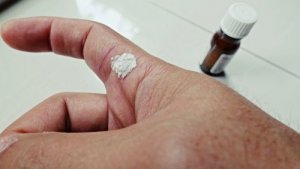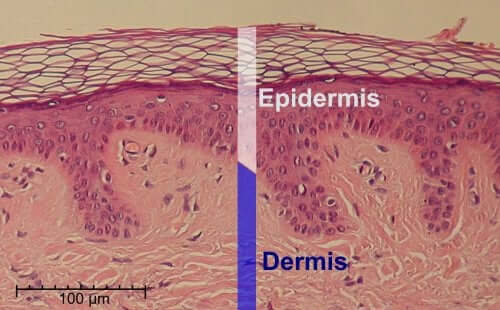What's Salicylic Acid?

Salicylic acid is a substance that has keratolytic and antimicrobial properties. Typically, experts use it in areas such as dermatology. This is because it’s able to promote skin peeling and prevent contamination by opportunistic bacteria and fungi. Also, it can regulate skin oiliness and act as an anti-inflammatory agent. Thus, experts consider it fundamental to improve the appearance of aging skin.
Where does salicylic acid come from?

Salicylic acid belongs to the group of analgesic, antipyretic, and anti-inflammatory agents. It was first described in the eighteenth century by Richard Stone. This reverend noted that white willow bark infusions cured fevers.
Medical professionals synthesized this substance for the first time in 1899. Then, they used it to replace quinine to control fever and pain orally. One of its metabolites was salicylic acid. This acid also has topical uses.
Actions and effects of salicylic acid
Overall, salicylic acid’s effect on the skin may be related to its impact on skin structure. Salicylic acid affects cohesion between keratinocytes, a type of cell, and skin peeling. Thus, this acid acts as a keratolytic (exfoliant) and antimicrobial in concentrations of 5 to 10%.
Also, it’s been attributed to a direct anti-inflammatory effect. However, this hasn’t yet been confirmed. At lower concentrations, between 1 and 3%, it acts as a keratoplastic. Keratoplastic substances are those that favor the regeneration of the stratum corneum and normalize defective keratinization. Keratolytics are substances capable of causing the collapse of the cornea or reduce its thickness.
Moreover, it’s important to note that salicylic acid is fat-soluble. This means that it can be mixed and dissolved in existing fats in the epidermis and the sebaceous material that’s stuck in the follicles. When it’s introduced into the skin’s lipid areas, it exfoliates and it.
Also, you should read: 3 Sugar Exfoliant Recipes to Fight Dry Skin
Indications

Overall, there are nine main indications for this substance:
- Keratolytic. In the concentrations we mentioned above, doctors use this to treat common, flat, and plantar warts.
- Keratoplastic. In 0.5%, doctors use it at the edge of atonic ulcers.
- Photodamage. Sometimes, experts indicate it to repair actinic keratosis and sunspots on the back of the hands and forearms.
- Photoprotector. In this case, it acts as a chemical filter.
- Antifungal. Also, it favors the penetration of topical antifungal drugs.
- Anesthetic. It has a certain anesthetic effect. This is because it intervenes in the synthesis of prostaglandins, substances related to pain. For example, medical professionals indicate it to relieve skin ulcer pain.
- Analgesic. Some salicylic acid derivatives are used to relieve bursitis and muscle aches.
- Antipruritic. It relieves itching.
- Anti-inflammatory. Just like its analgesic and anesthetic effect, its anti-inflammatory effect stems from its ability to inhibit prostaglandin synthesis.
Adverse effects of salicylic acid
As with all other chemical substances and drugs, salicylic acid can also trigger some adverse effects, which include the following:
- Toxicity due to systemic absorption. When the substance enters the bloodstream, it can trigger some problems such as nausea and vomiting.
- Mitotic inhibitor and teratogenic. This means that it affects cell division and fetuses. Therefore, experts advise against pregnant women using it.
- Allergic reactions. People who are allergic to this substance shouldn’t use it because it could lead to serious complications.
- Psychic disturbances. These side effects are less common.
You may also want to read: Allergy Tests: Types and Procedures
Conclusion
Experts recommend salicylic acid for many different things, as they consider it relatively safe and effective.
All cited sources were thoroughly reviewed by our team to ensure their quality, reliability, currency, and validity. The bibliography of this article was considered reliable and of academic or scientific accuracy.
- Bashira S, Drehera F, Chewa A. Cutaneous bioassay of salicylic acid as a keratolytic; International Journal of Pharmaceutics 2005 (292): 187-194
- Rougier A. Efficacy and safety of a new salicylic acid derivative (LHA) alone or as a complement of tretinoin in acne treatment. J Am Acad Dermatol, 2007 Feb (56) 2 sup 2: AB15.
- Bari AU, Igbal Z, Rahman SB; Superficial chemical peeling with salicylic Acid in facial dermatoses. J Coll Physicians Surg Pak. 2007 Apr;17(4):187-90.
This text is provided for informational purposes only and does not replace consultation with a professional. If in doubt, consult your specialist.








